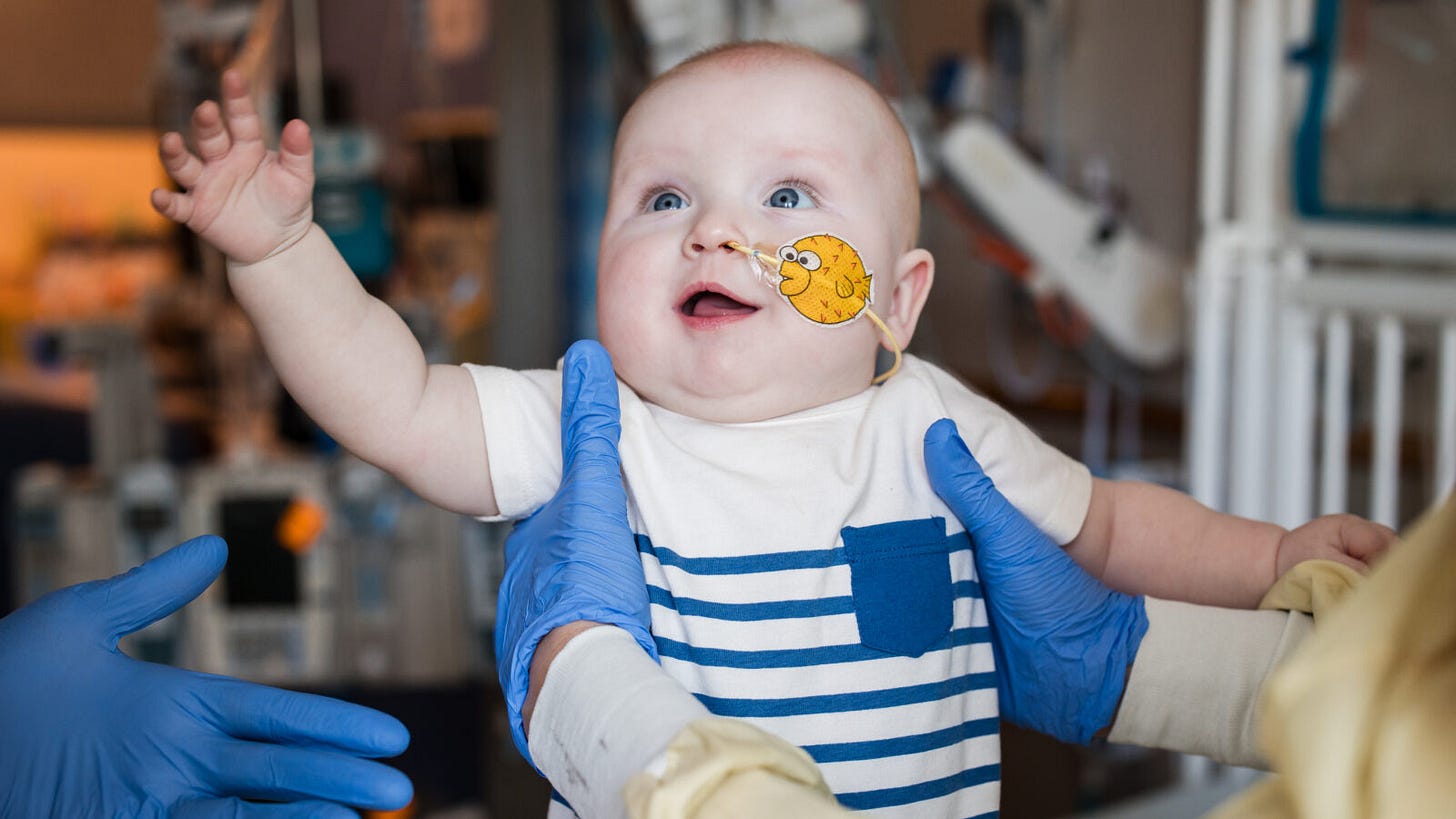FDA Opens New Pathway and Biotech’s Return to Offense — This Week in Biotech #78
A week of rare regulatory momentum, strategic M&A, and meaningful clinical wins (Nov 7-13, 2025).
Hi and welcome to This Week in Biotech by Biotech Blueprint, edition 78, covering biotech & pharma news from November 7th to 13th, 2025.
📣 With the holidays approaching, This Week in Biotech will skip the Nov 28 and Dec 26 editions. Our final issue of the year drops Dec 19, covering the biggest biotech moves of 2025, and we’ll be back Jan 2, 2026 with themes and companies to watch next year. 🦃🥧🎄
🌐 Visit our updated website, biotechblueprintconsulting.com, where we’re posting new visuals, reports, and details on our consulting work.
🎙️ Biotech Blueprint brings you weekly video updates on the latest biotech and pharma news, plus in-depth podcast interviews with industry leaders. You can find us on YouTube, Spotify, and Apple Podcasts.
In the latest episode, I sat down with Sensible Biotechnologies’ CEO and principal computational scientist to talk their cell-based mRNA platform and where mRNA goes next.
THIS WEEK IN BIOTECH VIDEO SUMMARY
THIS WEEK’S KEY TAKEAWAYS 🔑
The FDA stole the show this week, and not with routine approvals. First, it unveiled a truly transformational regulatory pathway called the new “plausible mechanism” framework, which allows personalized and ultra-rare disease therapies to win approval based on a small number of deeply characterized patients rather than large trials. It’s the first attempt to build real infrastructure for N of 1 and bespoke genetic medicines. It’s esentially a systematized version of the “Baby KJ” CRISPR case, scaled across hundreds of diseases that will never see a randomized study. If you work in gene editing, rare disease, or platform tech, your regulatory odds may have just improved dramatically.
At the same time, the FDA signaled continuity and competence at the top as Richard Pazdur, the longtime oncology chief and architect of modern cancer drug review, is taking the helm of the agency’s main drug division (CDER). The market reaction was telling and biopharma ETFs hit multiyear highs as investors priced in a regulator who knows how to move fast without being reckless. Expect more real-world evidence, more coordinated global reviews, and less tolerance for drugs that don’t hold up post-approval.
After a long, messy bidding process, Pfizer finally secured a position in the obesity-drug arms race with its $10 billion acquisition of Metsera. Novo Nordisk declined to top the bid. With injectable, oral, and combo programs, Pfizer at least has a path forward in a category that will define cardiometabolic care for the next decade. That’s not to say Pfizer will be competing directly with Novo and Lilly, but it’s definitely back in the game.
Meanwhile, real progress appeared at the science frontier. Kura Oncology landed early FDA approval for Komzifti, the first oral menin inhibitor for genetically defined acute myeloid leukemia. This is a a win for mutation-targeted cancer therapy. CRISPR Therapeutics showed striking in vivo gene editing data, lowering LDL and triglycerides at levels typically reserved for aggressive combination therapy. And Cogent Biosciences delivered the first major advance in gastrointestinal stromal tumors in two decades, with a phase 3 readout that wasn’t just positive, but it reshapes standard of care.
Taken together, this week nudged the sector a step further out of repair mode and back toward offense: regulators opened doors, (many) pipelines delivered, and big pharma put meaningful money behind programs it can’t afford to miss.
BIOTECH/PHARMA NEWS 🧬
🔹 FDA News: Three big moves signal both continuity and change. The FDA cleared Poherdy (China’s Shanghai Henlius) as the first interchangeable biosimilar to Roche’s Perjeta, widening affordable access to HER2-positive breast cancer care. Longtime oncology chief Richard Pazdur was appointed to lead CDER, sparking a market rally as investors bet on his data-driven balance of speed and rigor. And the agency unveiled a “plausible mechanism” pathway that could let personalized and rare-disease therapies win approval on small, mechanism-based studies with real-world confirmatory evidence, a framework inspired by the “baby KJ” CRISPR case that aims to bring bespoke gene and cell therapies to patients faster.

🔹 M&A roundup: Pfizer clinched its long-sought GLP-1 foothold, finalizing a $10B acquisition of Metsera after Novo Nordisk declined to raise its offer. The deal gives Pfizer injectable and oral obesity programs after years of internal setbacks. Meanwhile, AbbVie ended its $1.75B collaboration with Alphabet-backed Calico, winding down an 11 year partnership in aging and neuroscience research as it pivots toward genetic and injectable medicines.
🔹 Kura Oncology and partner Kyowa Kirin won FDA approval for Komzifti (ziftomenib), the first once-daily oral menin inhibitor for adults with relapsed or refractory acute myeloid leukemia carrying an NPM1 mutation, a genetic driver found in roughly 30% of cases. The approval came ahead of the target date, based on a pivotal trial showing meaningful remission rates and a manageable safety profile. Komzifti will cost $48,500 per month and competes directly with Syndax’s newly approved Revuforj, but with a key advantage: no boxed warning for QT-interval risks. Analysts project potential $1.3B in annual sales by 2031.
🔹 Eli Lilly is expanding into ophthalmology with a $475M deal to license MeiraGTx’s AAV-AIPL1 gene therapy, which restored vision in 11 children born legally blind from LCA4, a severe inherited retinal disease. The deal also gives Lilly access to MeiraGTx’s next-gen gene therapy tools, from AI-designed promoters to “riboswitch” control tech. It’s Lilly’s second eye-gene play in a month, following its Adverum buyout, signaling a serious push into one-and-done treatments for vision loss.
🔹 Regeneron and Sanofi reported a clean phase 3 win for Dupixent in allergic fungal rhinosinusitis (AFRS) in patients ≥6 years: the trial met all primary/secondary endpoints with big gains in CT sinus opacification, nasal congestion, and polyp size, plus a 92% reduction in steroids/surgery risk over 52 weeks. Safety tracked the known profile. The FDA has accepted a priority review sBLA (PDUFA Feb 28, 2026). If approved, AFRS would be Dupixent’s 9th U.S. indication and the first therapy specifically labeled for AFRS, expanding its dominance across type 2 inflammatory diseases.
🔹 Rhythm Pharmaceuticals (RYTM) slipped after the FDA extended its review of Imcivree (setmelanotide) for acquired hypothalamic obesity by three months, moving the PDUFA date from Dec 20, 2025 to Mar 20, 2026. The delay stems from the agency’s request for additional sensitivity analyses (not new data) from the pivotal phase 3 trial. Rhythm said the amendment doesn’t involve safety or manufacturing concerns and reaffirmed confidence in the data. If approved, Imcivree would become the first treatment for acquired hypothalamic obesity, a rare condition with no current therapies.
CLINICAL TRIAL UPDATES 📊
🔹 Korro Bio crashed after its lead drug KRRO-110 for alpha-1 antitrypsin deficiency made only small amounts of the needed protein, well below what’s considered protective, sending the stock down about 78%. Analysts cut ratings and slashed price targets. The company will lay off roughly a third of staff, its chief medical officer resigned, and Korro will switch to a new version of the drug and aims to pick a replacement in early 2026 while moving a second program for high ammonia into trials later in 2026. Cash stood at $103M at Q3, which management says should last into the second half of 2027.
🔹 Alkermes’ alixorexton (ALKS-2680) became the first oral orexin-2 receptor agonist to show efficacy in a large randomized phase 2 trial for narcolepsy type 2, meeting both primary endpoints (wakefulness and daytime sleepiness) at multiple doses after 8 weeks. The drug was well tolerated, with mostly mild side effects and no serious safety signals. Together with positive NT1 data, the results support a phase 3 launch in early 2026 and position alixorexton as a potential first-in-class, once daily therapy across the narcolepsy spectrum.
🔹 Cogent Biosciences surged ~130% after its phase 3 PEAK trial showed bezuclastinib + sunitinib beat sunitinib alone in second-line gastrointestinal stromal tumors (GIST): mPFS 16.5 vs 9.2 months (HR 0.50; p<0.0001) and ORR 46% vs 26%. Safety looked manageable (1.5% discontinued bezuclastinib), with no new combo risks versus sunitinib’s known profile. It’s the first positive phase 3 GIST in 20 years, and Cogent plans an NDA in 1H26, positioning this combo as a potential new standard of care if approved.
🔹 CRISPR Therapeutics reported early human data for CTX310, its in vivo gene-editing therapy that targets ANGPTL3 to lower LDL and triglycerides. A single IV dose cut triglycerides by 55% (up to 84%) and LDL by 49% (up to 87%), with a clean safety profile and no red flags so far. The program now moves into phase 1b in severe hypertriglyceridemia and mixed dyslipidemia, signaling CRISPR’s push beyond blood disorders and into metabolic disease, where gene editing could someday rival statins and PCSK9s.
🔹 Gilead (GILD) announced that its phase 3 ASCENT-07 trial testing Trodelvy (sacituzumab govitecan) as a first-line treatment for HR+/HER2-negative metastatic breast cancer failed to meet its primary endpoint of progression free survival versus chemotherapy. Overall survival data are still maturing, but early signs favored Trodelvy. Safety was consistent with prior studies and no new concerns were seen. The result limits near term expansion prospects for Trodelvy, which remains approved as a later line therapy in HR+/HER2-negative and triple-negative breast cancer.
🔹 Other clinical updates: Several smaller developers posted mixed readouts. Neurocrine Biosciences’ NMDA modulator failed a phase 2 depression study; AnaptysBio’s anti-PD-1 agonist missed in ulcerative colitis, and MannKind discontinued its nebulized antibiotic trial for refractory lung infections after showing no efficacy. All three cited safety consistency but will refocus pipelines toward better-validated assets.
Have a great rest of your week and thanks for reading Biotech Blueprint!



